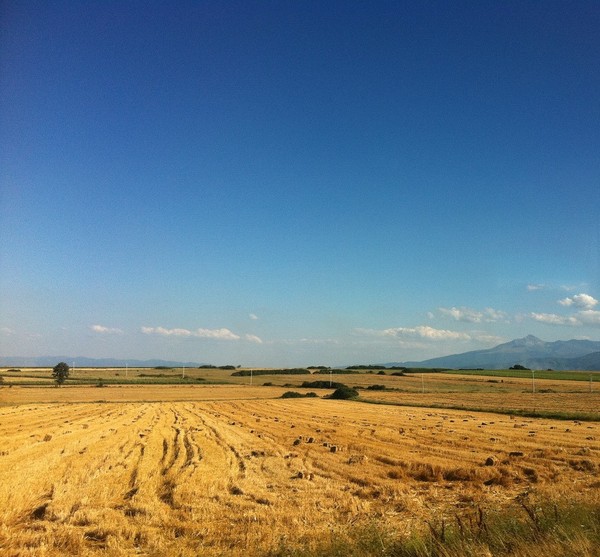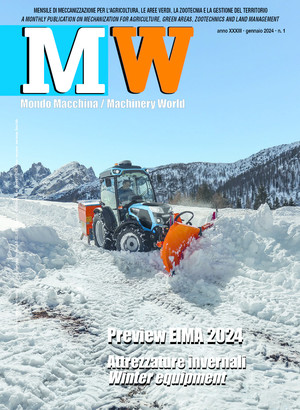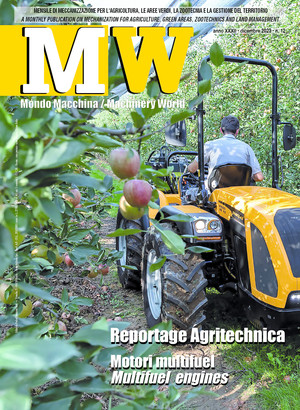
Balkan agriculture rewards machinery Made in Italy
The Balkan countries make up one of the leading markets for Italian agricultural machinery manufacturers as shown by 2013 exports valued at more than 247 million euro, a marginal decline under the 2011-2012 figures but still in line with the average results reported for the past five years. For tools, equipment, components and tractors, the Balkans accounted for 8% of all Italian exports around Europe and 5.3% of global Italian exports.
Tractors exports take off in Bulgaria and return to growth in Greece.
Aggregates of data at the regional level obvious hide highly significant differences from one context to another. In the case of tractors, for example, more than half Italian exports bound for the Balkan peninsula were taken by Slovenia, 999 units, and Bulgaria, 824, followed at a distance by Romania, 462, Greece, 454, Croatia, 268 and Albania, 177. Further down the ranks were Serbia, Macedonia and Bosnia with Kosovo and Montenegro playing more marginal roles. Still referring to 2013, it turned out that Bulgaria, other than showing great demand for tractors Made in Italy was also the country with the strongest growth of imports from Italy over the five-year period 2009-2013 with gains of 63% for units and 53% in value in 2013 over the previous year and increases of 96% for units and 99% in value over the five years. The trend of growth for Bulgaria counterbalanced the steep drop of exports to Romania, where three years on the positive side were followed by a 44% plunge in units and drop of 36% in value in 2013 to return to the export picture of five years earlier. Also on the negative side were Albania, Macedonia and Slovenia which were, however, the leading importers of Italian power units in the Balkan region. Serbia, Croatia and especially Greece are returning to growth. From 2004 to 2008 Greece imported an average of 2,500 Italian tractors per year then, in 2009, coinciding with the global financial crisis and facing the risk of default, the country's trade with Italy fell to 318 units in 2012 to sink to the minimum last recorded in 2003. Also Croatia displayed encouraging signals in 2013 where six years of more or less uninterrupted gains ended with three more years of generalized declines to a minimum of 190 units and then bounced back but stayed at the levels reported for 2002.
Agricultural machinery: Romania, the top Made in Italy market.
Moving from the sector of tractors to agricultural machinery in general the scenario shows a significant change. In this sector, in fact, Romania is the main Made in Italy market of reference in spite of a substantial slowdown in 2013 leading to a 15.4% drop in the value of Italian exports, more than 62 million euro, which did not however dampen the record levels run up in previous years. Bulgaria presented a high profile with imports from Italy in remarkable growth, from more than 14 million euro in 2010 to 34 million in 2013 for a surge of 140% to thereby confirm the trend coming to the fore in the tractor sector. Also Greece, which moved from Italy's leading market in the area six years ago to third place, displayed a similar trend with a small degree of recovery in maintaining values close to the minimum reported for 2012, 19 million euro equal to minus 53% under 2009. Italian exports followed another similar trend for Croatia where these values settled at about 14 million euro for the two years 2012-2013, well below more than 26 million euro in 2008. On the positive side, Serbia chalked up a further 9% gain in Italian imports. Of interest is that this country was the only one in the Balkan region for which demand for Italian agricultural machinery rose steadily from 2010 through 2013. And finally Albania and Bosnia-Herzegovina, both showing recovery in 2013, are two countries featuring an import trend which repeatedly swings from gains to declines year by year.
The Balkans: potential and weaknesses in the agricultural sector.
In substance, significant but incomplete indicators such as those on the trend of Italian imports point to an agricultural mechanization sector characterized by strong differentiation from one area to another. This picture is apparently confirmed by statistics on machinery inventories which underscore sharp differences from one country to another and put Serbia in the advantageous position of leadership attained by a tractor inventory which came to 583,000 units, according to Italian Foreign Trade Agency (ICE) data for 2012. This inventory is followed on down in UN Food and Agriculture Organization figures dating back a few years, to 2006 for some and 2008 for others, which put Greece at 259,000 tractors in 2006, Romania 175,000 in 2008, Slovenia at 104,000 in 2005 and Bulgaria at 53,000 in 2008 Albania at 7,400 in 2008 with decisively smaller inventories. Also to report is that from 2003 to 2008 Bulgaria boosted the nation's tractor inventory by 65.5% with an increase of 21,000 units. What emerges from these statistics – aside from noting differences between the sources and that Croatia is left out – is the strong lack of mechanization uniformity and thus the different ways of farming. These differences however do not obscure shared structural features linked to the legacy of the communist regimes which governed in almost all of the region. In this connection, Greece, Croatia and Slovenia appear to have turned to more market-oriented farming and production systems whereas Albania, Bosnia and Macedonia – countries in which the primary sector still plays a decisive role in the formation of GDP and employment levels – are forced to come to terms with a number of weak points. Albania, for example, must take account of the excessive fragmentation of land ownership and a level mechanization which is still inadequate for ensuring competitiveness for the sector coping with the challenge of international competition. In Bosnia – where recent flooding exacerbated the still unresolved destruction left behind by the inter-ethnic conflict – the main problems are those connected to the underdevelopment of farmlands, the shortcomings of irrigation systems and the conversion of farmlands for construction developments. Also Serbian agriculture plays a front rank role, especially in light of the great potential of the sector for the leading products of wheat, maize, soya, sugar beets and fruit and vegetables thanks to favorable climatic and environmental conditions, the fertility of the soil and the good available of water resources. But as ICE points out, there are still a number of weaknesses to consider. These are led by the lack of preparedness for the management of weather emergencies and the scant willingness to apply new generation technologies to cultivation techniques and instruments, as shown by the Serbian machinery inventory which is extensive but considerably outdated. The trends in Romania and Bulgaria are more positive. The economic form set out by ICE for Romania reports that the agricultural, forestry and fishing sector contribute 6-7% in the formation of GDP. The value of agricultural production increased in ten-year period 2000 to 2011 from 4.4 billion euro to 17.1 billion. There is however considerable room for improving the country's agriculture through providing farms with better techniques – especially with greater mechanization where the average tractor inventory comes to 19 units per hectare, still below the European average – overcoming the problems of the fragmentation of land ownership and renewing farm infrastructure. And finally, for Bulgaria ICE refers to the partial modernization of the machinery inventory making progress and the agricultural share of GDP formation falling from 5.2% to 4.4% in 2011 flanked by a substantial 7.2% increase in the share of value added.








